New Book Releases / Spring + Summer 2024
If you would like to alert us to a recent or forthcoming film publication for the next round-up in autumn, please contact Ruben Demasure. For notes on more books, see David Hudson’s monthly round-up at Criterion’s The Daily.
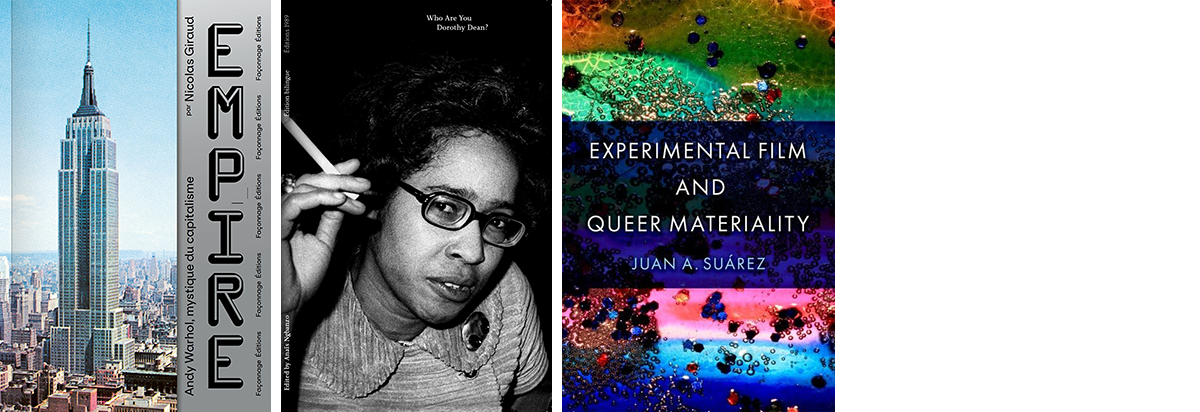
In honour of the film historian and critic Adriano Aprà, who passed away last month, we open with a selection of new books about two filmmakers close to his heart, Andy Warhol and Pier Paolo Pasolini. With the help and trust of Pasolini, Aprà edited four books for Garzanti, an important Italian publishing company. This role enabled him to launch a collection titled Laboratorio centred around cinema, bringing untranslated Russian texts to the forefront. Some were published in Cinema & Film, a film magazine he founded and edited. His work for Garzanti also featured the first translations of texts by Godard, Metz, and Bazin. Warhol, in turn, was the focus of Aprà’s seminal Il cinema di Andy Warhol, one of the best studies on the American artist. We hope many translations of Aprà’s work will finally begin to appear now.
This brings us to our first new book release, a study of one of Warhol’s most radical films, Empire, a still shot of the Empire State Building, eight hours and five minutes long, published by Façonnage Éditions in February. In Empire: Andy Warhol, mystique du capitalisme, Nicolas Giraud observes the materials of Empire – skyscrapers, electricity, and night – to lay bare the subconscious of American cinema and its use of desire in the service of commodities. Illustrated with over sixty images borrowed from a wide range of references and artists, including several of the author's own photographic works taken during extensive research in the United States, Empire is their most ambitious work to date. You can order the book here.
Starring in six of Andy Warhol’s films and inspiring the likes of Robert Mapplethorpe and Robert Creeley, Dorothy Dean (1932–1987), a key figure in the 1960s New York underground scene, is the subject of our next book. Said to be the first woman ever hired as a fact-checker at The New Yorker, Dean held brief editorial and proofreading positions at publications such as Vogue before launching her very own bulletin of film reviews, The All-Lavender Cinema Courier, in 1976. However, in histories of the era, she is often overlooked. Published in January by Éditions 1989, Who Are You Dorothy Dean? is the first book devoted to the late African American writer and actress. This book features a selection of her unpublished writing and correspondence with Edie Sedgwick, Rene Ricard, and Taylor Mead among other friends and artists. It also includes the outline of a book she planned to undertake with the Factory actor Ondine.
Containing a chapter on Warhol (‘Amphetamine and Queer Materiality in Andy Warhol’s Factory Films’), the book Experimental Film and Queer Materiality is a new addition to the Oxford University Press list. This book studies a rich archive of queer material engagements in work by well-known filmmakers such as Warhol, Barbara Hammer, Carolee Schneemann, and Jack Smith, as well as under-recognised figures such as Tom Chomont, Jim Hubbard, Ashley Hans Scheirl, and Teo Hernández. Combining history, formal analysis, and theoretical reflection, author Juan A. Suárez shows how plastics, glitter, mechanical ensembles, urban ruins, garbage, amphetamine, film grain, and noise have been mobilised in the articulation of queerness for the screen. Experimental Film and Queer Materiality is an inquiry into the liveliness of matter and into the interface between sexuality and the material world.
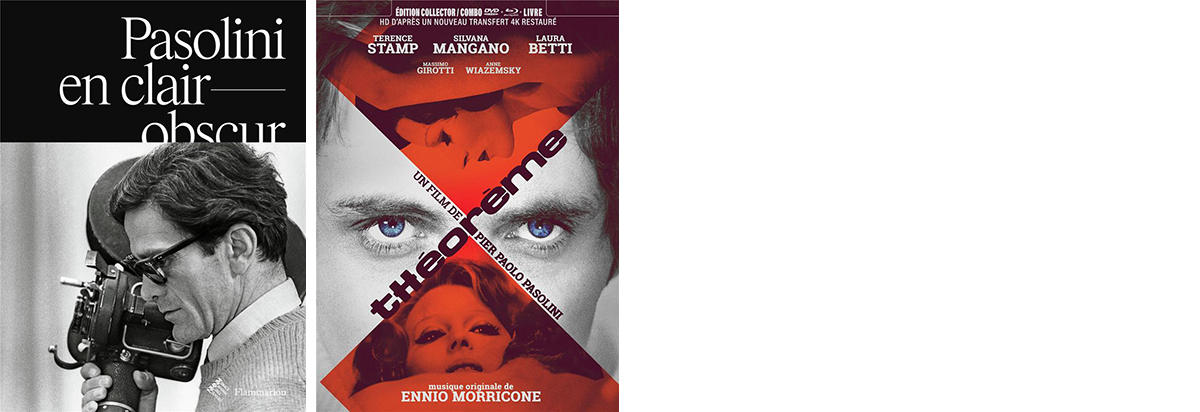
From Warhol, we venture to Pier Paolo Pasolini with a new book on the Italian poet and filmmaker. Although Pasolini liked to describe himself as a writer, it was as a filmmaker that he achieved worldwide fame. It is this aspect of his work that is the focus of the exhibition Pasolini en clair-obscur at the Nouveau Musée National de Monaco from March 29 to September 29, 2024. The accompanying, eponymous new catalogue Pasolini en clair-obscur is devoted to the dual question of the influence of classical and contemporary art on Pasolini’s aesthetic and the way in which it, in turn, inspires today’s artists. The catalogue is available for purchase here.
Additionally, Théorème, a new DVD/Blu-ray edition of Pasolini’s 1968 film Teorema was released in February, with a sixty-page booklet by the scholar Hervé Joubert-Laurencin.
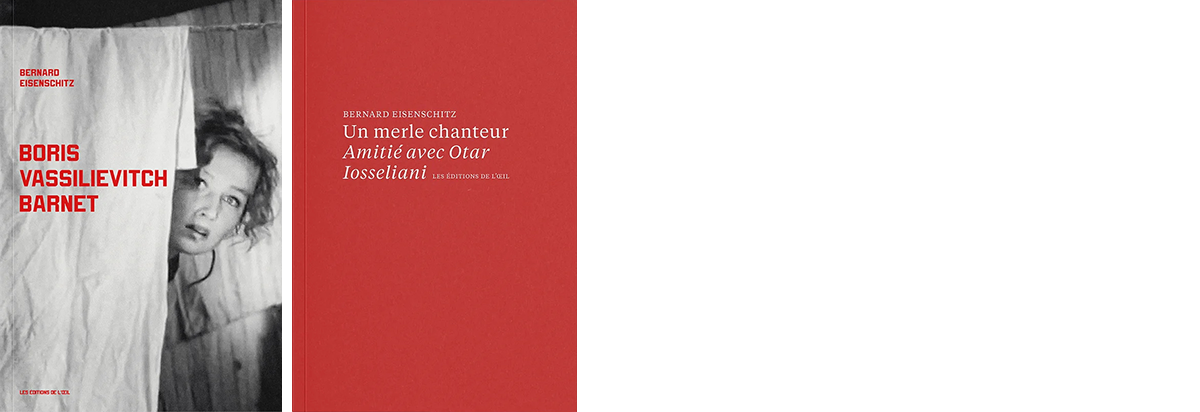
In February, we highlighted the Boris Barnet retrospective at the Cinémathèque Française in Paris, which was festively inaugurated with a screening of The House on Trubnaya and followed by a discussion with Bernard Eisenschitz and a book signing session for his new book Boris Vassilievitch Barnet (Les Éditions de l’Œil, 2024). Boris Barnet, whom Jacques Rivette once called “the best Soviet filmmaker,” apart from Eisenstein, is still fairly unknown. He made his first film The Girl with the Hatbox only shortly after Battleship Potemkin. Although aware of avant-gardes, he favoured a cinematic trend focusing on actors and storytelling. His films Okraïna and By the Blue Sea are celebrated for juxtaposing the weight of bodies with the desire to fly and tenderly observing both men and women. Who was Boris Barnet? Eisenschitz sets out to answer the question, the result of spending several years in archives, watching films – some of them banned, many of them hard to find. In the conclusion of the book, Eisenschitz also talks about his personal relationship with the director’s work.
Also from Éditions de l’Oeil, there is another book by Bernard Eisenschitz, this one on his friendship with the Georgian filmmaker Otar Iosseliani, Un merle chanteur: Amitié avec Otar Iosseliani. Otar Iosseliani was born a Soviet citizen in Tbilisi on February 2, 1934, and he died a Georgian and French citizen in the same city on December 17, 2023, at the end of a life of resistance, exile, cinema, humour, melancholy, and vodka, and after twenty-one films between Aquarelle in 1958 and Chant d’hiver in 2015. Bernard Eisenschitz met him in Moscow in July 1969. They became friends around the Bolshoi, Michel Simon, L’Atalante, and a flat on Gorky Street. This friendship gave rise to a cinematic companionship that lasted more than fifty years, first from afar – when the films of one of them reached the other – then from close up, with the filmmaker sometimes hiring the historian to act, for example in Les favoris de la lune, and the historian writing regularly about his work. ‘Le temps compté’ and ‘In vino veritas’, the two texts in this book, tell as much about this relationship of cinema and friendship as they do about the filmmaker’s relationship with history, his country, the USSR, and the craft of filmmaking.
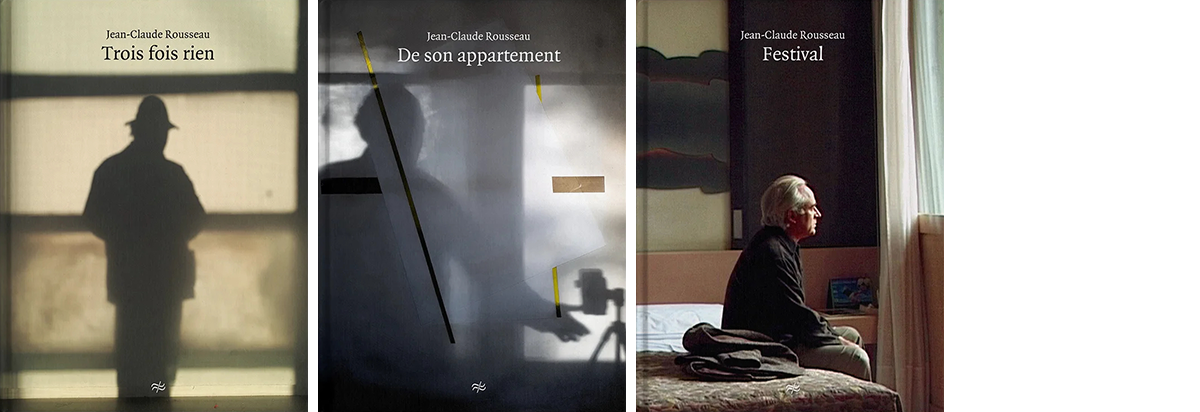
We conclude the list of Éditions de l’Oeil publications with three DVD-books featuring the work of Jean-Claude Rousseau, which were released in April. The books contain photograms, drawings and collages along with essays by Cyril Neyrat, Mathieu Macheret, and Fabrice Lauterjung. Lauterjung writes: “Let’s propose a hypothesis: since everything in Rousseau’s cinema, in order to reveal itself within the frame, must risk its own disappearance, could it be that the entire work is a self-portrait? Or perhaps it’s the other way around.”
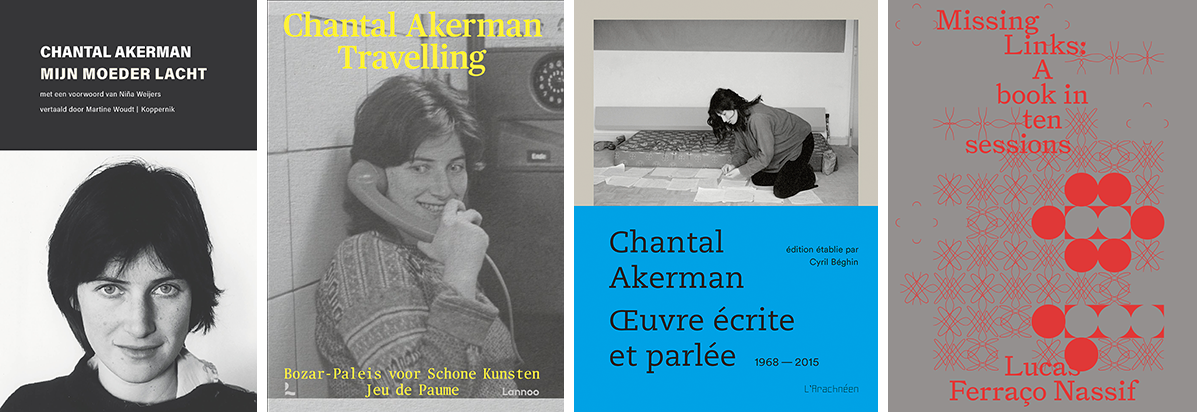
After translations in English, Spanish, Polish, and Romanian, there’s finally a Dutch translation of Chantal Akerman’s Ma mère rit. In this unforgettable and moving memoir, the last book written before her death, Akerman blends her matter-of-fact writing style with family photographs and stills from her own films in order to better describe and speak toward the most tender of human elements: her family, her lovers, and most urgently, the deterioration of her mother’s health along with her own mental health. Ma mère rit is both a summary of the themes Akerman dealt with throughout her life and a version of the simplest and most complicated love affair of all: that between a mother and a daughter. Niña Weijers, the author of Kamers antikamers, De consequenties, and Cassandra (Atlas Contact), wrote the foreword to the new translation issued by the independent publishing house Koppernik. You can order Mijn moeder lacht here.
To kick off the exposition Chantal Akerman: Travelling in March, which still runs until July 21, Bozar and Jeu de Paume published the exhibition catalogue Chantal Akerman: Travelling in collaboration with Lannoo Publishers. The exhibition outlines Akerman’s accomplishments through the years as an artist, from her humble beginnings in Brussels to her time in New York and the Mexican desert. BOZAR is showing seven installations, from Akerman’s iconic D’Est, au bord de la fiction to her last installation NOW. It also showcases never-before-seen images and working documents from her archive, displaying Akerman’s diverse repertoire of film, television, text, and installation art. A modified version of the exhibition will also be presented at the Jeu de Paume Paris from September 28, 2024, to January 19, 2025. The exhibition catalogue features contributions from the people who were closest to Akerman. Sharon Lockhart and Anouk De Clercq both contributed to the publication.
In the winter edition of our New Book Releases, we also announced the publication Chantal Akerman - Œuvre écrite et parlée, the collected writings of Chantal Akerman edited by Cyril Béghin and published by L’Arachnéen. As of March 15, the collection is available for purchase. Her collected writings were published in the form of three volumes brought together in a box set: two chronological volumes (1968-1991 and 1991-2015) strictly devoted to Akerman’s texts, including screenplays (half of which are for unmade films), synopses, notes of intent, texts for the voice-overs, preparatory and set photographs, but also interviews, working documents, all essentially unpublished.
From Akerman’s own writing, we journey with a colourful cast of her characters to Wittgenstein and Anne Carson in Lucas Ferraço Nassif’s queer inquisitive cine-poem Missing Links: A Book in Ten Sessions. Lucas Ferraço Nassif is an Italian-Brazilian psychoanalyst and experimental filmmaker living in Lisbon, Portugal. His new book takes a remarkable approach to the work of Akerman. By tracing connections among figures like Jean-Luc Godard, Ludwig Wittgenstein, Anne Carson, Gilles Deleuze, and Jacques Lacan, the project invites us to reconsider the intersections of film and writing, autobiography and criticism, theory and practice. The book is an open-access publication.
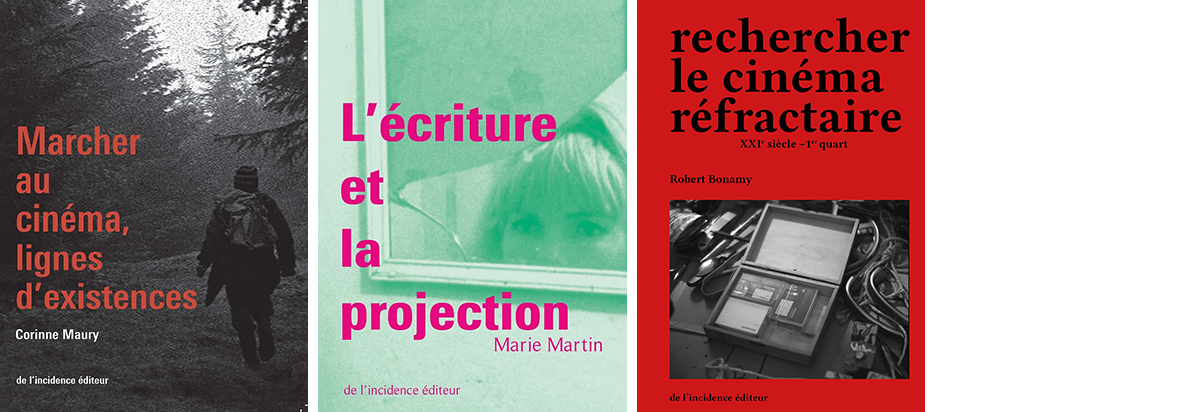
Although people often move on foot in cinema, the cardinal and primordial act of walking is often overshadowed. Deemed anti-spectacular and the prime site of cinematic ellipsis, walking is, for the most part in cinema, a banal gesture whose temporal amplitude must be limited under the pretext of its narrative paucity. Marcher au cinéma: lignes d’existences, a new book by Corinne Maury, takes walking and cinema into account, suggesting that some contemporary cinematographic walks are political, critical, or even utopian. From the daily lines of survival (Wang Bing’s Wu ming zhe [Man With No Name]) to the bogged-down lines of Karrer in post-communist Hungary (Béla Tarr’s Kárhozat [Damnation]), from the zigzagging lines of flight of the bandit Carol Izba on the Causse du Larzac (Alain Guiraudie’s Du soleil pour les gueux) to the lines slowed to a crawl in Tsai Ming-Liang’s Walker in Hong Kong, a segment of contemporary cinema has embraced this method of anchoring through movement, Maury argues. The book is the first of three new books in our overview by the French publishing house De L’Incidence éditeur. With a preface and postface written by Antoine de Baecque and Pierre Creton respectively.
L’écriture et la projection by Marie Martin poses the question of what common ground exists between the works of Pierre Alferi, Léos Carax, Emmanuel Carrère, Claire Denis, Louis des Forêts, Yannick Haenel, Nathalie Léger, Christine Montalbetti, the poet Jérôme Game, and the publisher Paul Otchakovsky-Laurens. Martin hypothesises that their poetics are organised around the same concern for writing subjected to the powers of projection – a beam of light that transports an image onto a screen: a photogram that scrolls and exposes itself to dissimilarity; a virtual image that becomes actualised; a fleeting image whose evanescence unfolds. Cinema becomes a surface for inscribing traumas that are rewritten by filmic figurability: optical or psychic projection brings into play a transport and a deformation intended to act as a screen.
Published this month, Recherche le cinéma réfractaire by Robert Bonamy – one of the two people heading De L’Incidence éditeur – examines the films of sometimes little-known filmmakers. Filmmakers who sketch out something – the here and now, a future that is not insignificant – while tirelessly analysing historical confrontations. Bonamy seeks seek out refractory cinema, that is, the attempts of filmmakers who initiate their own conditions of artistic research, in order to understand that the filmic zones they develop do not fill the margins but renew the very heartbeat of cinema. A cinema that preserves human and non-human fragments to better develop plans for the lives of anyone.
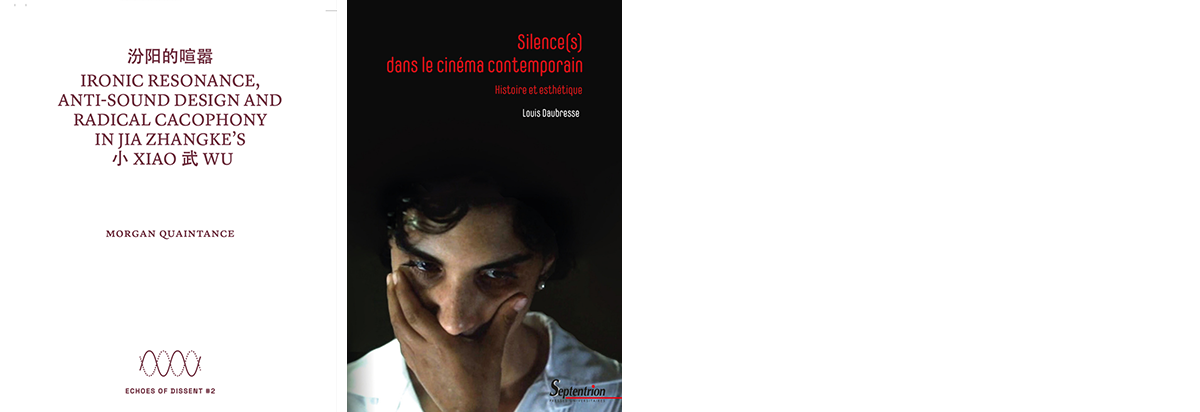
Sound in film was a large focus in this year’s edition of the Courtisane festival, which took place at the end of March in Ghent with a new experimental set-up with multiple programmes. In the context of The Skin of the World programme, Courtisane invited Morgan Quaintance to reflect on the use of sound in Jia Zhangke’s Xiao Wu [Pickpocket]. The result is titled Ironic Resonance: Anti-Sound Design and Radical Cacophony in Jia Zhangke’s Xiao Wu, only the second publication in the Echoes of Dissent series – a continuation of the research project Figures of Dissent by Courtisane programmer Stoffel Debuysere – devoted to the politics of the soundtrack.
From sound to its elusive opposite: How does silence work in film? And how can we even identify this phenomenon which seems to imply the complete disappearance of sound itself – or at least its minimisation – within a given film? The presence of silence, whether momentary or lasting, tends to lead to the paucity – or even total suppression – of words and music, but not necessarily of all noise. Grounded in a genealogical and hermeneutic approach, Louis Daubresse’s Silence(s) dans le cinéma contemporain: Histoire et esthétique (Presses universitaires du Septentrion) analyses the presence of silence in contemporary cinema, which the book argues is governed by a dual principle of figurative heritage and discursive rupture. The corpus includes films by Robert Bresson, Marguerite Duras, Andrei Tarkovsky, Theo Angelopoulos, Tsai Ming-liang, Béla Tarr, Pedro Costa, and Sharunas Bartas. Beyond its aesthetic considerations, the book also questions the anthropological, moral, social, and/or political values underlying concrete manifestations of silence in film and invites us to rethink our fundamental relationship with the world on an ethical and sensible level.
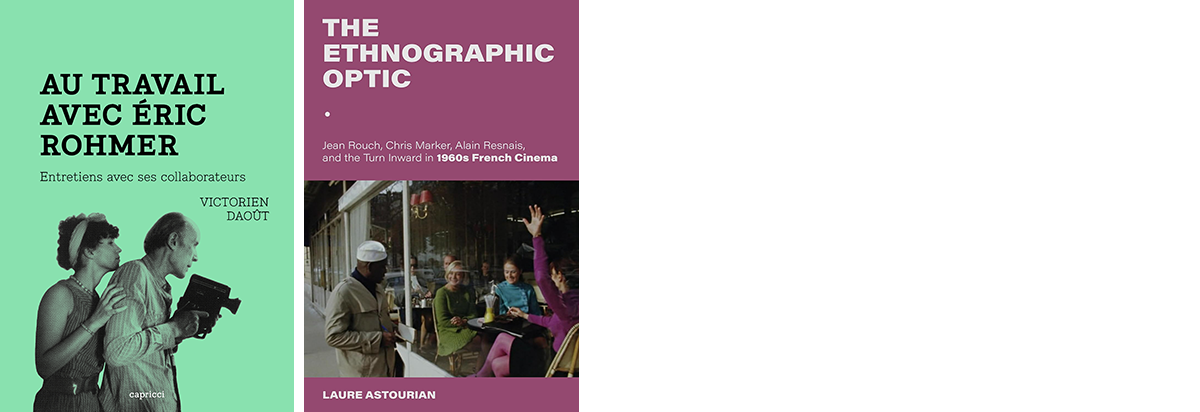
After Rosette’s memoirs on Eric Rohmer (Eric – L’ami Rohmer; last January), the new book Au Travail avec Eric Rohmer (February 16; Capricci) brings together the testimonies of fifty of Éric Rohmer’s collaborators. The key figures in Rohmer’s world recount their memories of their work, from Arielle Dombasle to Fabrice Luchini, from the producer Françoise Etchegaray to the costume designer Pierre-Jean Larroque. They take us behind the scenes of all the director’s films: La collectionneuse, Ma nuit chez Maud, Les nuits de la pleine lune, Conte d’été, L’Anglaise et le Duc... These previously unpublished interviews shed new light on his work.
On to a publication on some of Rohmer’s contemporaries: The Ethnographic Optic: Jean Rouch, Chris Marker, Alain Resnais, and the Turn Inward in 1960s French Cinema (Indiana University Press; June 2024) traces the surprising role of ethnography in French cinema in the 1960s and examines its place in several New Wave fictions and cinéma vérité documentaries during the final years of the French colonial empire. Focusing on prominent French filmmakers Jean Rouch, Chris Marker, and Alain Resnais, Laure Astourian elucidates their striking pivot from centring their work on distant lands to scrutinising their own French urban culture. As awareness of the ramifications of the shrinking empire grew within metropolitan France, these filmmakers turned inward what their similarly white urban bourgeois predecessors had long turned outward toward the colonies: the ethnographic gaze. The book features some of the most canonical films of the French tradition such as Moi un noir, La jetée, and Muriel.
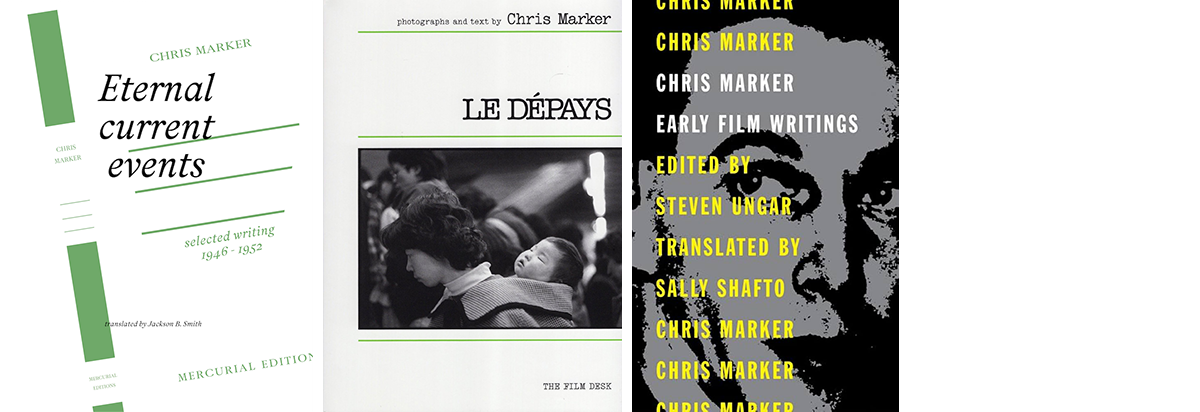
Staying with Marker, who was the focus of one of our latest installments of our Milestones series at the beginning of last month, there are three more notable publications about the French filmmaker. The first was already announced in our autumn edition of the New Book Releases and zooms in on the fact that Marker was also a writer of short stories, essays, poems, and fabricated reportage before his film career. Before making his first films in the 1950s, Chris Marker was a regular contributor to the Paris-based magazine Esprit from 1946 to 1952. Unbound by genre or form, Marker’s pieces range from short stories, essays, poems, and reviews to fabricated reportage and invented news affairs, all marked by the hallmarks of his style: a blurring of reality and imagination, a wry sense of humour, a sustained political engagement, and of course a limitless curiosity for animal life. Eternal Current Events: Early Writings, published by Inpatient Press, marks the first time these exemplary works are available in English, published in an adapted facsimile of the original periodical. In these short selections, what one encounters is less a past life before his turn toward cinema than a preamble to his celebrated body of work. Moving images did not replace Marker’s production as a writer but were incorporated into it. Before the “imaginary films,” there were “imaginary current events”; before the travels through time in La jetée, there was a bulletin rethinking the psychogeography of the around-the-world trip; and before the musings on a Japanese temple consecrated to cats in Sans soleil, there was a summary report on the theological implications of the 1952 Parisian Cat Fair. Marker did not just begin his career as a writer; he remained one throughout his life.
In the same vein but forthcoming in August, University of Minnesota Press will publish Chris Marker: Early Film Writings, the first English translation of early writings on film by Marker. Ranging from late silent-era films to postwar Hollywood’s efforts to contend with the rise of television, these texts document the emergence of Marker’s critical voice and situate him alongside contemporaries as well as future French New Wave figures.
Additionally, from Film Desk Books comes the first English language edition of Chris Marker’s 1982 photo-essay Le Dépays with a new introduction by the writer and artist Sadie Rebecca Starnes. Lovingly adapted from the original design, it features Marker’s own translation aside some of his most exquisite yet rarely seen black-and-white photography. Realised over the same years as its film companion Sans soleil, the book traces similar themes – cats and owls and Japan – but without ever leaving Golden-Gai for Guinea-Bissau. Musing among department store maneki-neko and dreamers on the metro, wandering between Tokyo and no place at all, this is nevertheless a unique glimpse of Marker feeling very much himself and quite at home; that is, delightfully disoriented. “Inventing Japan is just another way of getting to know it... Trust appearances, consciously confuse the decor with the drama, never worry about understanding, just be there – dasein – and everything will come your way. Well, something at least,” writes Chris Marker in Le Dépays.
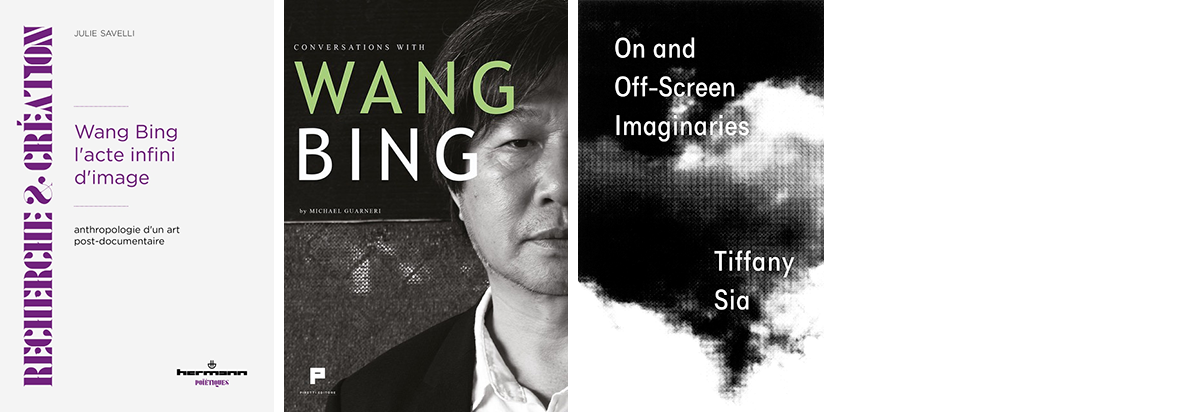
For almost twenty years, the Chinese artist Wang Bing has been producing a rhizomatic body of work (processuality, variability, performativity) at the intersection of cinema and contemporary art. In order to grasp the singularity of his production (film, installation, video work), Julie Savelli sets out to shed light on Wang Bing’s creative process in Wang Bing: l’acte infini d’image - Anthropologie d’un art post-documentaire, which appeared in February. Through a poetic and anthropological approach that acknowledges the artistic turn of documentary creation, this essay looks at how the modes of existence resulting from this socio-genetic terrain are constitutive of Wang Bing’s “post-documentary” image-making. More on Wang Bing this summer with a new publication by Michael Guarneri, published by Piretti Editore. The book, aptly titled Conversations with Wang Bing, presents its readers with six in-depth interviews conducted by Guarneri from 2014 to 2023.
Also on the subject of “post-documentary” is the book On and Off-Screen Imaginaries by the artist and filmmaker Tiffany Sia, a new survey on the rise of a new documentary vernacular and fugitive cinema. This collection of writings gathers six essays that offer a framework for an exilic fugitive cinema. Sia addresses geopolitics in cinema, image circulation, and national imaginaries, highlighting the stakes of deterritorialising the discursive formation of new media and film practices and making the case for the continued relevance of cinema in an era of networked images and screen ubiquity.
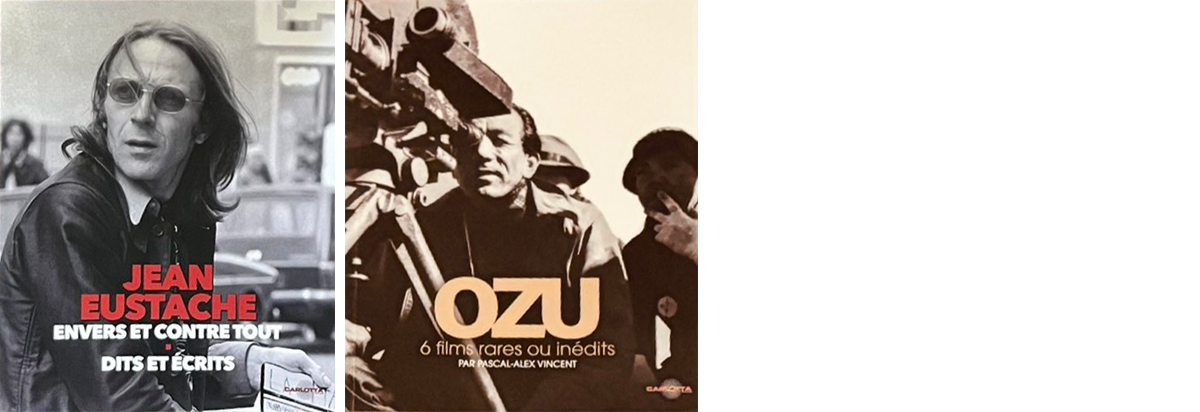
This spring, the French distribution house Carlotta Films released two new Blu-ray collections. The first features the recently restored films by the French filmmaker Jean Eustache. The films, including the mythical La maman et la putain (1973), were restored in 4K digital format after an agreement was reached between Boris Eustache and Les Films du Losange. The restoration was guided by cinematographers who participated in the original filming, such as Jacques Besse and Caroline Champetier, in conjunction with the Italian laboratory L’Immagine Ritrovata. The Jean Eustache box set also contains a 160-page booklet and numerous extras: film projects, interviews, texts, and analyses… all illustrated! You can order it here.
Complementing Carlotta’s 2020 reissue of Carnets d’Ozu and the recent Ozu hors-champs, a translation of the 2013 biography of the filmmaker written by the Japanese journalist Térui Yasuo, Carlotta releases a Blu-ray collection featuring six rare and previously unpublished films by Yasujirô Ozu. Ozu 6 Films rares ou inédits contains Kaze no naka no mendori [A Hen in the Wind] (1948), Tôkyô no onna [Woman of Tokyo] (1933), Kohayagawa-ke no aki [The End of Summer] (1961), and a previously unreleased TV-film directed by Tsuneo Hatanaka and co-written by Ton Satomi and Yasujiro Ozu, among other films. The box set also features a sixty-page booklet by the specialist of Japanese cinema Pascal-Alex Vincent, who previously wrote Yasujiro Ozu: une affaire de famille. Bonus materials include an interview with Jean-Michel Frodon and a text by Jean Douchet.
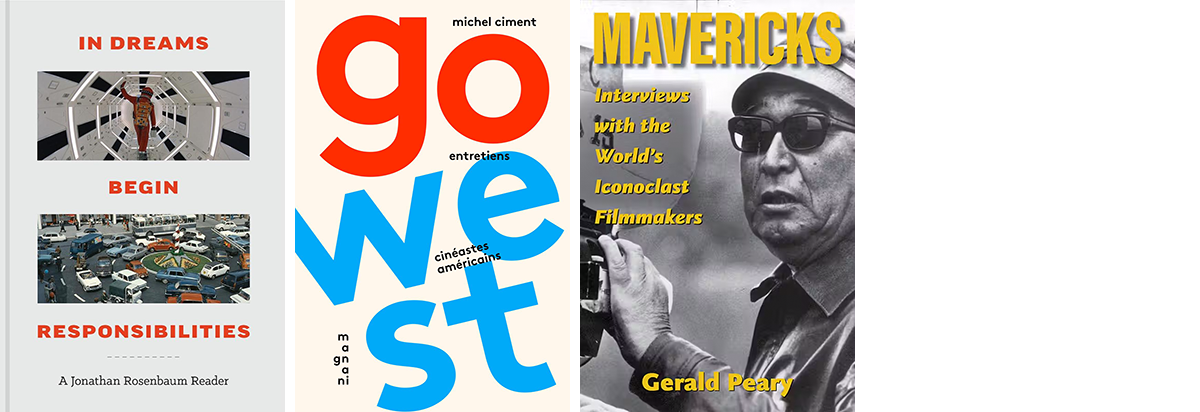
In April, the American critic Jonathan Rosenbaum gave a talk in Toronto to present In Dreams Begin Responsibilities, a new and expansive collection of his writing. Looking back at six decades of criticism, where many flights of fancy and fantasy prove to suggest certain duties as well as privileges, Jonathan Rosenbaum has teased out three threads: the film criticism he is mainly known for (especially during his twenty-year stint at the Chicago Reader), the literary criticism he has also been publishing over the past half-century, and the jazz criticism he has been writing during the same period. Believing that these three art forms are interrelated and have often been intertwined in his perceptions of them, he built a manifesto out of a hundred of his best pieces arranged chronologically, taking on such disparate figures as Stanley Kubrick, Thomas Pynchon, Sonny Rollins, Michael Snow, Philip Roth, Duke Ellington, Spike Lee, Roland Barthes, Keith Jarrett, Jean-Luc Godard, Vladimir Nabokov, and Ahmad Jamal, and such diverse subjects as Adam Curtis documentaries, Mad, Peanuts, Louis Armstrong, Italo Calvino, A.I. Artificial Intelligence, Shoah, Johnny Guitar, PlayTime, Chantal Akerman, Kelly Reichardt, Kira Muratova, William Faulkner’s Light in August, Bad Luck Banging or Loony Porn, and in a final essay dealing with all three artforms, a film of a jazz cantata by André Hodeir derived from a passage in James Joyce’s Finnegans Wake.
Also dealing with a vast array of filmmakers, Go West is a collection of twenty-six interviews with different generations of Hollywood filmmakers from Fritz Lang to Quentin Tarantino, collected by author, historic critic, and well-known contributor to Positif magazine, Michel Ciment, over some fifty years. Directors interviewed include Budd Boetticher, Richard Fleischer, Fritz Lang, Gordon Douglas, Howard Hawks, Otto Preminger, Richard Brooks, John Frankenheimer, Irvin Kershner, Sidney Lumet, Robert Mulligan, Arthur Penn, Franklin J. Schaffner, Robert Altman, Francis Ford Coppola, Alan J. Pakula, Martin Scorsese, Michael Cimino, Sydney Pollack, Oliver Stone, Woody Allen, Tim Burton, the Cohen brothers, James Gray, Steven Soderbergh, and Quentin Tarantino. The preface to Go West includes an interview between Michel Ciment and Julien Magnani.
Shifting the perspective to include Black, queer, female, and non-Western filmmakers, Mavericks: Interviews with the World’s Iconoclast Filmmakers by Gerald Peary tries to amplify the voices of a wide-ranging group of groundbreaking but often marginalised filmmakers including Samira Makhmalbaf, Roberta Findlay, Howard Alk, Ousmane Sembéne, and John Waters, whose identities, perspectives, and works are antithetical to typical Hollywood points of view.
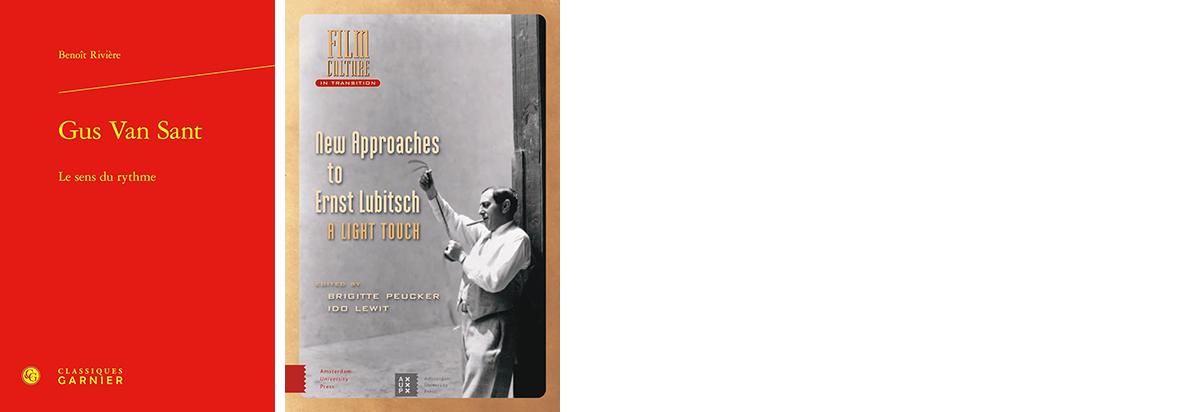
The latter publication by Gerald Peary also includes three short encounters with Gus Van Sant. In April, a new book was released that explores Van Sant’s cinematographic work from the point of view of the notion of rhythm in an effort to define rhythm in cinema on the basis of the American director’s films. Gus Van Sant: Le sens du rythme by Benoît Rivière can be ordered here.
Also famous for his sense of rhythm was the German-born American film director Ernst Lubitsch. New Approaches to Ernst Lubitsch: A Light Touch, a new collection of unpublished essays on Lubitsch edited by Brigitte Peucker and Ido Lewit, was published in March and addresses multiple gaps in scholarly and critical engagement with the director. His understudied early German films shed light on Jewish culture, the relation of comedy to gender, and the influence of theatre on his filmmaking. The essays in this volume aim to expand the knowledge of the set designers, actors, directors, and members of the émigré community who contributed to Lubitsch’s films. The book emphasises the role of material objects to open up a new dimension of critical engagement, hoping to shed light on Lubitsch’s neglected films and the antifascist dimension of his oeuvre.
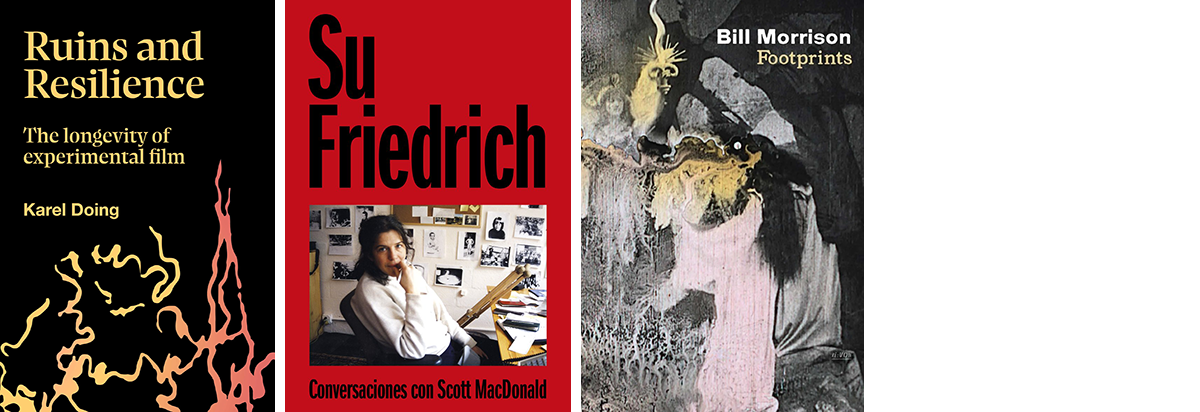
Ruins and Resilience, a new book by the Oxford-based experimental filmmaker Karel Doing weaves autobiographical elements and critical reviews together with a wide-ranging interdisciplinary approach. The book, which received praise from Nicole Brenez, demonstrates how experimental filmmakers have continued to renew their practice despite the almost total demise of analogue motion picture film and the constant neglect of this art form by institutions and critics. Doing looks into the connections between the work of groundbreaking artists within the field and subjects such as transgression, improvisation, collectivity, materiality, phenomenology, and perception. Specifically, intersections with music and sound are investigated, appealing to the idea of the cross-modal brain – the ability to perceive sounds and images in an integrated way. Instead of looking again at the “golden era” of experimental film, the book starts in the 1980s, showing how this art form has never ceased to surprise and inspire.
Two new publications have been published on the work of two other experimental filmmakers, Su Friedrich and Bill Morrison. Following the focus on the work of Su Friedrich in its 2024 edition, Punto de vista published a new book of conversations with the filmmaker co-edited with Caniche. The book brings together an interview with Scott MacDonald, already included in his book A Critical Cinema 2 (1992), along with a lengthy, previously unpublished interview about her recent work. Bill Morrison’s work is the focus of a new Blu-ray release this winter by Re:Voir. Bill Morrison: Footprints includes a bilingual (French/English) booklet with texts by Anne-Violaine Houcke, Laura Staab, and Steve Dollar.
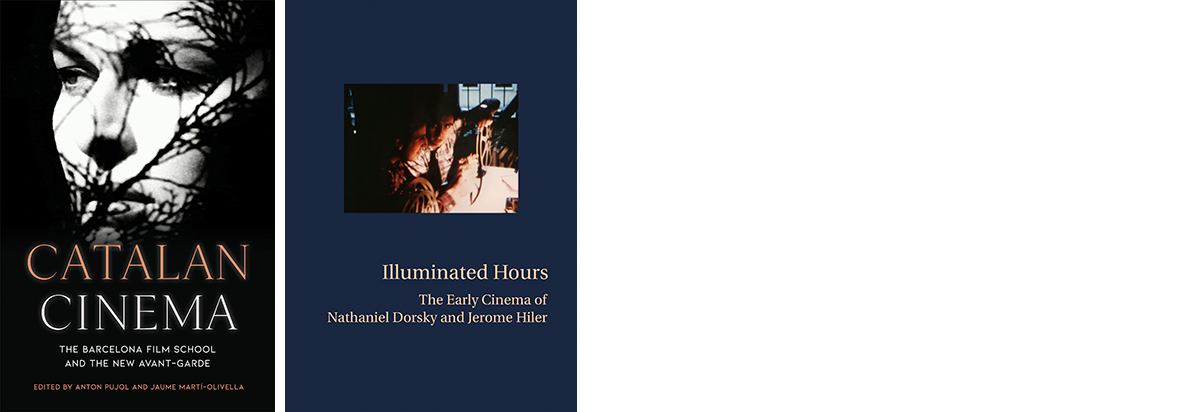
Catalan Cinema (In)Visible Traditions offers a theoretical reading of the most relevant cinematic productions to have emerged from Catalonia in the last twenty years. The essays in this collection examine cinema in relation to the Escola de Barcelona (The Barcelona School), a group of cinema directors that drew inspiration from British pop-art, Free Cinema, and the Nouvelle Vague to create works that defied and challenged the Franco dictatorship. Highlighting the aesthetic, social, and political elements of Catalan cinematography, contributors to this volume explore what young directors have in common with works created by more notable directors such as Joaquim Jordà, Jacinto Esteva, Jordi Grau, and Pere Portabella. Catalan Cinema focuses on the importance of modern production and its connection with the avant-garde and underground cinema from the Barcelona School. Establishing a cinematic genealogy, the volume ultimately questions if Catalan cinema’s own push for self-expression may be interpreted as a connection to Catalonia’s current drive for independence.
The next book comes from two programmers working in Catalunya, Francisco Algarín Navarro and Carlos Saldaña, programmers at the Filmoteca de Catalunya and Xcèntric (CCCB) in Barcelona. It’s the English translation of their book about filmmakers Nathaniel Dorsky and Jerome Hiler. Illuminated Hours: The Early Cinema of Nathaniel Dorsky and Jerome Hiler covers more than forty years of work and shared life, including four new interviews, texts from the filmmakers and friends of the couple, documents, manuscripts, letters, notes, and personal photos. The original Spanish language edition is also still available to order here.
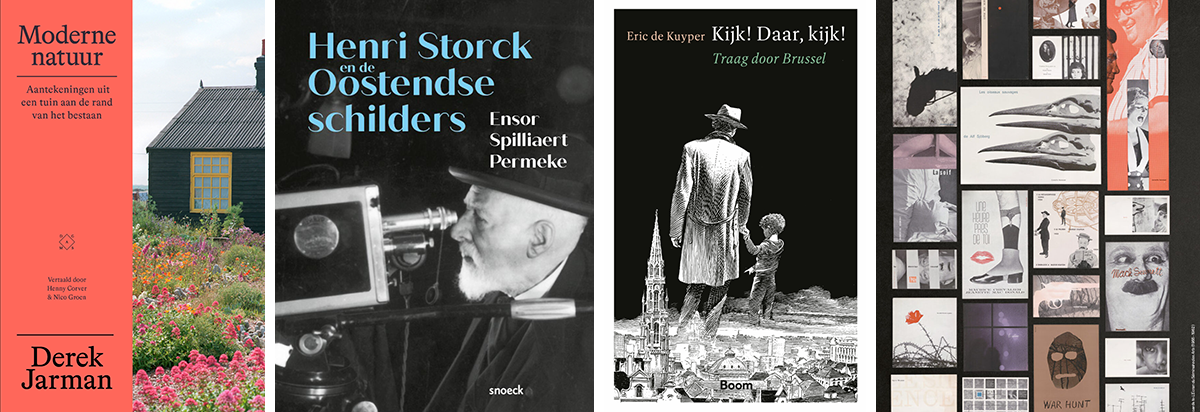
Today, Derek Jarman’s garden on the barren coast of Dungeness is a place of pilgrimage for garden and art lovers from all over the world – and his diary Modern Nature a classic. After discovering he was HIV positive, Jarman found solace in nature, growing all manner of plants. While some perished beneath wind and sea spray, others flourished, creating brilliant, unexpected beauty in the wilderness. Modern Nature is both a diary of the garden and a meditation by Jarman on his own life: his childhood, his time. Now for the first time there is a Dutch translation. Derek Jarman: Moderne natuur: Aantekeningen uit een tuin aan de rand van het bestaan can be ordered on the website of Das Mag Uitgevers.
Another collection of personal notes, not on garden maintenance but on existence in the city of Brussels, comes in the form of Kijk! Daar, kijk! Traag door Brussel, a new book with writing by the Belgian writer and critic Eric de Kuyper. After years of living in France, the Netherlands, and Germany, de Kuyper returns to his native Brussels. He wanders through the metropolis and stumbles upon memories of a past life, which he effortlessly interweaves with his impressions in the present. He takes a fresh look at the city he grew up in. Perhaps Eric de Kuyper is Brussels: a mixture of styles, views, and languages. He proves that Brussels can never be definitively captured. De Kuyper describes the capital with undisguised admiration and love but also with a critical note. “The lovelessness with which so many houses or buildings are treated makes my heart bleed. And then suddenly, a loving detail.”
From Brussels to the Belgian coastal city Ostend, where Henri Storck roamed and filmed in the previous century. Henri Storck initially realised avant-garde documentary essays about his hometown, then experimented with found footage and made a few militant films. During the German occupation, he continued filming. After liberation, he gained a well-nigh official status in Belgium as the father of Belgian documentary. Storck is also one of the pioneers of art film. Back in 1944, he filmed some paintings by Paul Delvaux, whose dreamy universe he managed to evoke intensely. As an Ostend native, he knew the “Ostend painters” Ensor, Spilliaert, and Permeke well and often photographed and filmed them. Henri Storck et les peintres ostendais: Ensor, Spilliaert et Permeke, a new book released in March, traces this artistic relationship.
Lastly, CINEMATEK published an illustrated hardcover book on the Royal Film Archive’s graphic designer Corneille Hannoset with texts and interviews by Pierre Alechinsky, Gabrielle Claes, Suzy Embo, Massia Gruman and Michel Olyff. More information can be found at the bottom of CINEMATEK’s website.
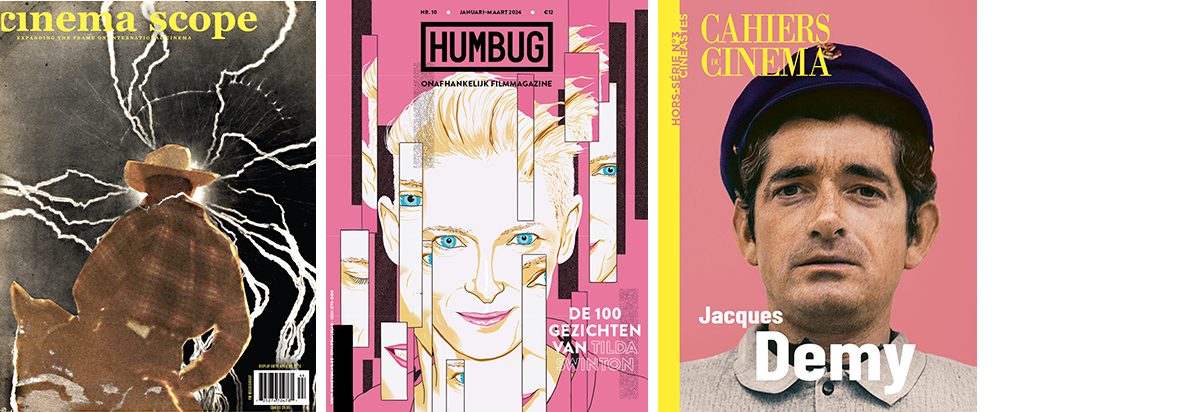
Our usual round-up of film magazine news unfortunately starts with some sad news. In January, Cinema Scope’s editor-in-chief Mark Peranson announced the closure of the Canadian journal. As Peranson noted at the time, “The (film) world has changed plenty since 1999, and though I’ve done my best to try and change with it, maybe it’s time for different voices to assume positions of authority.” Later, news got out closer to home that the Belgian magazine Humbug would also stop its print issues. Some time after it seemed that continuing the magazine seemed untenable, so the magazine decided to cease its activities completely. On May 29, Humbug said goodbye with a screening of Michael Clayton at De Cinema in Antwerp.
We can bring more positive news however with a new Cahiers Hors-séries about the French filmmaker Jacques Demy that was released in April. Based on the same model as its two predecessors dedicated to François Truffaut and David Lynch, this Jacques Demy special issue includes a selection of critical texts by Jean-Luc Godard, Paul Vecchiali, François Weyergans, Jean Douchet, and many others, as well as interviews published in the magazine. These include two major interviews given by Jacques Demy in 1964 (at the time of Les parapluies de Cherbourg) and in 1982 (at the time of Une chambre en ville), as well as exceptional testimonials from Catherine Deneuve, Michel Legrand, and Bernard Evein, the artistic director of Demy’s films.
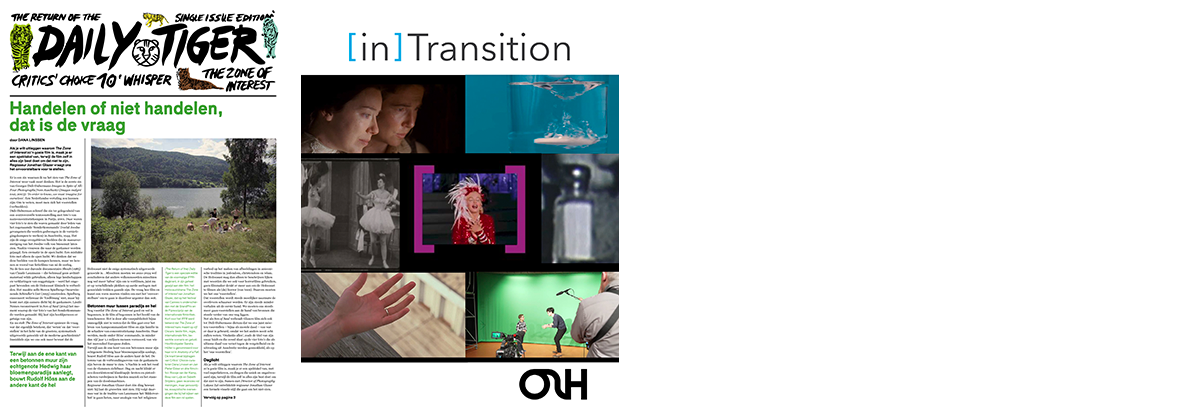
Just like Sabzian, the journal [in]Transition: Journal of Videographic Film & Moving Studies celebrates its ten-year anniversary this year. Its latest issue marks the anniversary of the initial launch of [in]Transition, which debuted at the Society for Cinema and Media Studies (SCMS) conference in Seattle in March 2014. As of 2024, [in]Transition is published by the Open Library of Humanities (OLH) and owned by SCMS. In addition to two reflective pieces, the issue features five original videographic essays. Edited by Kevin Ferguson and Barbara Zecchi, the issue also features four videos on a wide range of topics and media forms: ecocriticism of contemporary film, spatial analysis of music videos, early cinema’s presentation of backstage space, and the production practices of pseudo-reality television. Register here for an account and get notified when new issues are released!
Like last year, Dana Linssen and Jan Pieter Ekker made a special edition of Daily Tiger as part of the IFFR. It is devoted in its entirety to Jonathan Glazer’s The Zone of Interest, which explores the limits of imagining the Holocaust. The paper includes essays by Roosje van der Kamp (de Filmkrant, Het Parool), Boaz van Luijk (Nederlands Dagblad), and Sabeth Snijders (NRC). Dana Linssen wrote an introductory article, and Jan Pieter Ekker had an interview with German actress Sandra Hüller, who plays “the Queen of Auschwitz.”
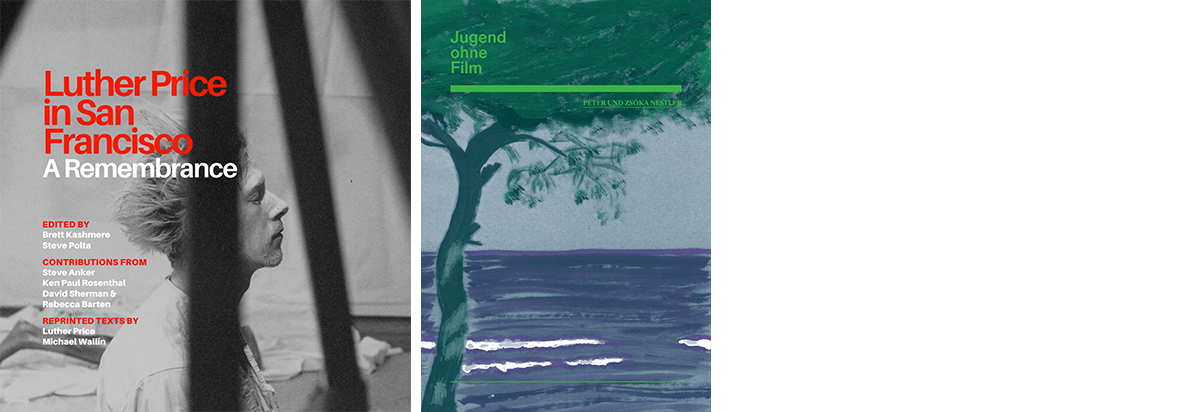
After mentioning New Utopia and Light Fracture, a posthumous work made from the slides and interspersed email messages from American experimental filmmaker Luther Price to VSW Press over a period of two years, in our latest New Book Releases, San Francisco Cinematheque publishes a new zine on the artists. Luther Price in San Francisco: A Remembrance is a visually oriented zine focusing on the renowned filmmakers’ relationship to San Francisco Bay Area film culture. Luther Price in San Francisco features brief oral-history reflections; film stills; never-before-published photos of Price’s 1992 Meat performance and the equally infamous performance Clown Part II: Scary Transformation (1994); scanned ephemera from Cinematheque’s archives; images of Price’s astonishing hand-collaged film cans (courtesy of Canyon Cinema); and reprints of texts by Michael Wallin and Price himself.
On the occasion of the retrospective in the Zeughauskino Berlin, Jugend Ohne Film released a special booklet about Peter and Zsóka Nestler. The booklet is available from May 24 for five euros as part of the retrospective curated by Frederik Lang and Patrick Holzapfel. A large collection of texts on the Nestlers’ films can be found on their website as well.
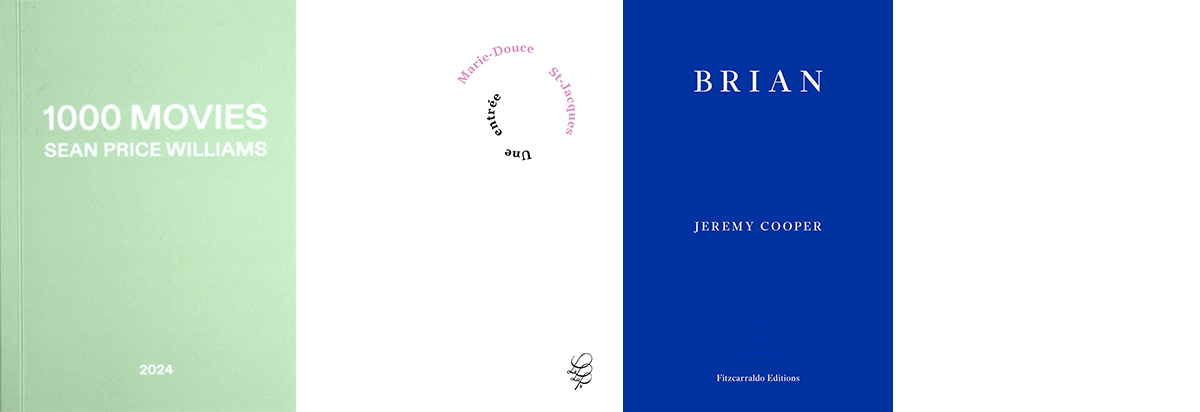
This concludes another round-up of film books. We end our overview with three publications that are each very different iterations of cinephilia. The first book, Sean Price Williams: 1000 Movies (Metrograph Editions) by cinematographer and director Sean Price Williams (The Sweet East), departs from email traffic. Williams maintained and sporadically emailed friends and colleagues a list of one thousand movies – not necessarily a top thousand, but a personal list from which Williams draws inspiration. First compiled upon the time of his discharge in 2005 from the storied Kim’s Video store, the selection changes constantly and has developed like a friendship. Over the years, the list has garnered a cult following and is now publicly available for the first time as an artist’s book published by Metrograph Editions.
Published in January, the book Une entrée traces a different kind of cinephilic journey by collecting pages full of cinema tickets. Exhumed from the past, the multidisciplinary artist Marie-Douce St-Jacques preserved these numerous tickets in an effort to retrace fragments of a cinephilic itinerary and to tell the story of a discreet struggle against oblivion and indifference. Marie-Douce St-Jacques is also the founder of the publishing house Le laps.
Conspicuously absent from our previous editions of the New Book Releases but impossible to leave out of this closing selection is Jeremy Cooper’s book Brian, published in May last year by Fitzcarraldo Editions. In Brian, the titular character leads a solitary life working at Camden Council and frequenting the same café daily. However, a visit to the BFI sparks a change as Brian discovers the world of cinema, particularly through the works of Yasujirō Ozu, Federico Fellini, Agnès Varda, and Yilmaz Güney.

